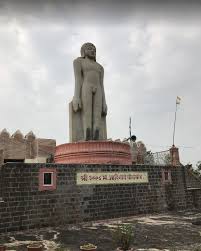Introduction: Discovering Nandani’s Jain Legacy
Many spiritual seekers and heritage enthusiasts often overlook the lesser-known Jain temples nestled in Maharashtra’s countryside. For those yearning to explore Jainism’s rich history beyond the popular sites, the Jain temples of Nandani offer a unique and enriching experience. This article delves into the temples’ history, architecture, and significance, providing insights for both devotees and cultural explorers.
Historical Significance of Nandani’s Jain Temples
Nandani, a village in the Shirol Taluk of Kolhapur District, Maharashtra, is an ancient Jain heritage center with over 1,200 years of history. The village houses a Jain Math (monastery) with a Bhattarakha seat, currently held by Sri Jinasena Bhattarakha Swamiji. This seat belongs to the Sena Gana, Pushkara Order, a tradition that includes the revered Acharya Shantisagar. The Chaturtha subsect of Digambar Jains looks up to the Bhattarakha of this Math for religious guidance. The Math’s structure is ancient, standing on 300 pillars, most of which are made of wood.
Architectural Features of Nandani’s Jain Temples
The Jain temples in Nandani showcase traditional Jain architectural elements:
- Ancient Adinath Digambar Jain Temple: Dating back to around the 10th century A.D., this temple houses a green-colored stone idol of Tirthankar Adinath in Kayotsarga posture as the main deity. The Garbhagriha (sanctum) also contains marble idols of Tirthankar Parshwanath in Padmasana, Panchadathu (five-metal) idols of Tirthankar Parshwanath, Lord Bahubali, and other Tirthankaras in Kayotsarga and Padmasana postures. Additionally, Panchadathu idols of Yakshi Chakreshwari, Jwalamalini, and Padmavati are present. The temple features a wide Navaranga (central hall) with an ancient inscription. The Shikhara (pinnacle) of the temple has a marble idol of Tirthankar Adinath in Padmasana. A wide platform and a lofty Manastambha (pillar of honor) stand in front of the temple.
- Adinath Digambar Jain Temple (1894 A.D.): Built in 1894, this temple houses a black-colored idol of Tirthankar Adinath in Padmasana as the main deity.
- Padmavati Temple: A small temple located beside both the Adinath temples, it houses the idol of Yakshi Padmavati as the main deity.
- Parshwanath Temple: Situated within the village, this temple contains a black-colored idol of Tirthankar Parshwanath in Padmasana as the main deity.
- Choubis Tirthankar Temple: Located beside the Adinath idol, this temple features black-colored idols of 24 Tirthankaras in Kayotsarga. Additionally, a black-colored idol of Tirthankar Parshwanath in Padmasana and a small stone idol of Lord Bahubali are present.
- Charanas of 24 Tirthankaras: Just beside the Adinath idol and Choubis Tirthankar Temple, the footprints (charanas) of 24 Tirthankaras are installed inside separate mantapas (pavilions).
- Rishabanchal: Approximately 2 kilometers away from the Jain Math is an area called Rishabanchal, where a 31-foot-high idol of the 1st Tirthankar Adinath stands in the open air. In front of this idol is a Manastambha.
Religious and Cultural Importance
The Jain temples of Nandani are more than just places of worship; they are cultural hubs for the local Jain community. These temples host various festivals and rituals that foster a sense of unity and spiritual growth among devotees. The presence of idols representing all 24 Tirthankaras emphasizes the comprehensive nature of Jain philosophy.
Visiting Nandani’s Jain Temples
Location: Nandani, Shirol Taluk, Kolhapur District, Maharashtra, India
Accessibility:
- Nandani is located approximately 14 kilometers from Ichalkaranji.
- The village is accessible via local roads connecting to major towns in the district.
- Private buses and cars can easily reach the village.
Best Time to Visit:
- During Jain festivals or annual temple celebrations for an immersive cultural experience.
Conclusion
The Jain temples of Nandani offer a serene and spiritually enriching experience, reflecting the profound heritage of Jainism in Maharashtra. Their unique architecture and historical significance provide a distinctive insight into Jain art and devotion. Whether you’re a devout follower or a cultural enthusiast, a visit to these temples promises a meaningful journey into India’s diverse spiritual landscape.
These temples are not just structures; they are reminders of our roots, our peace, and our spiritual strength. If you ever get a chance, do visit. Even if you have never read a book about Jainism, your heart will understand the calm and truth these places offer.
